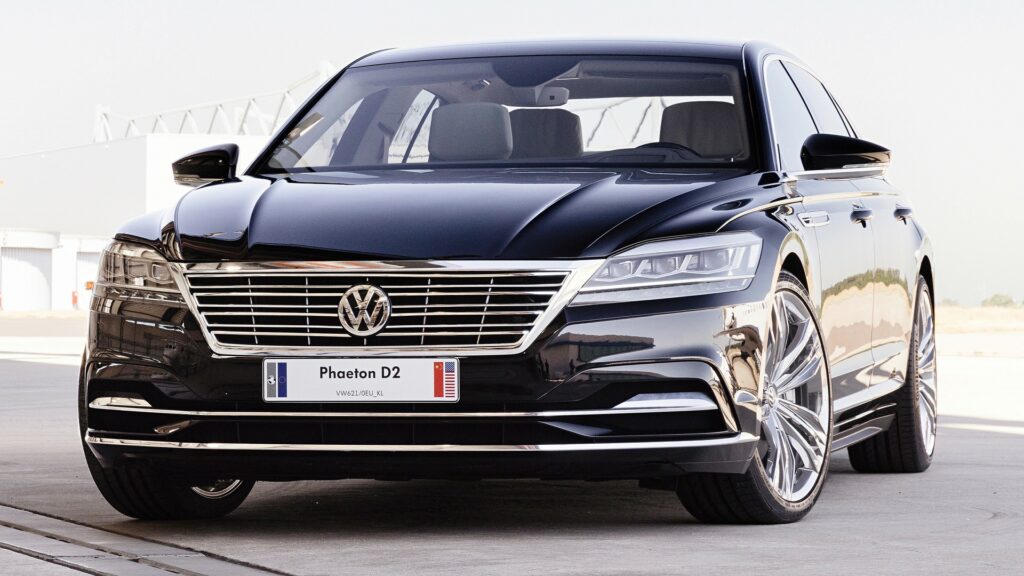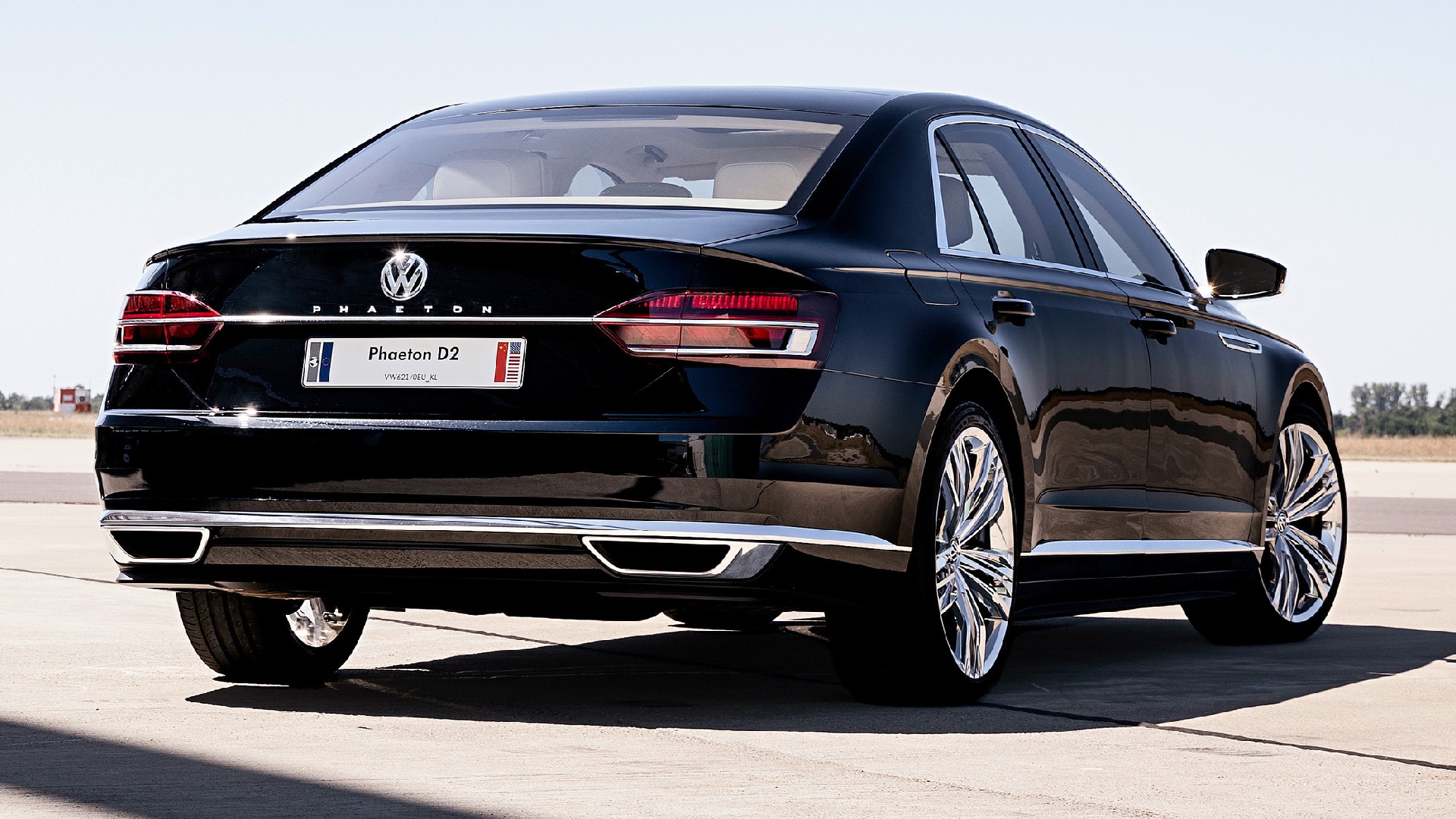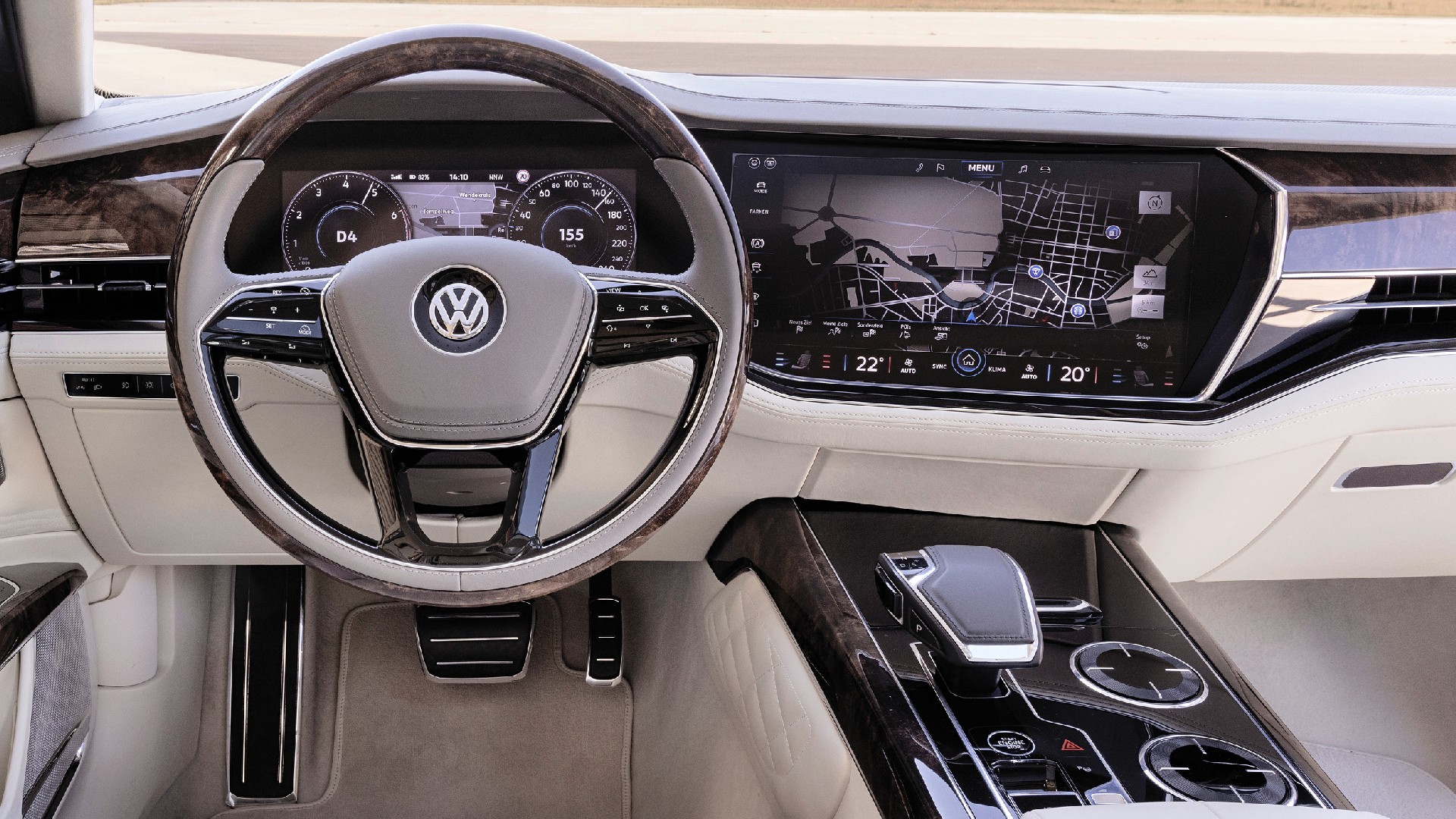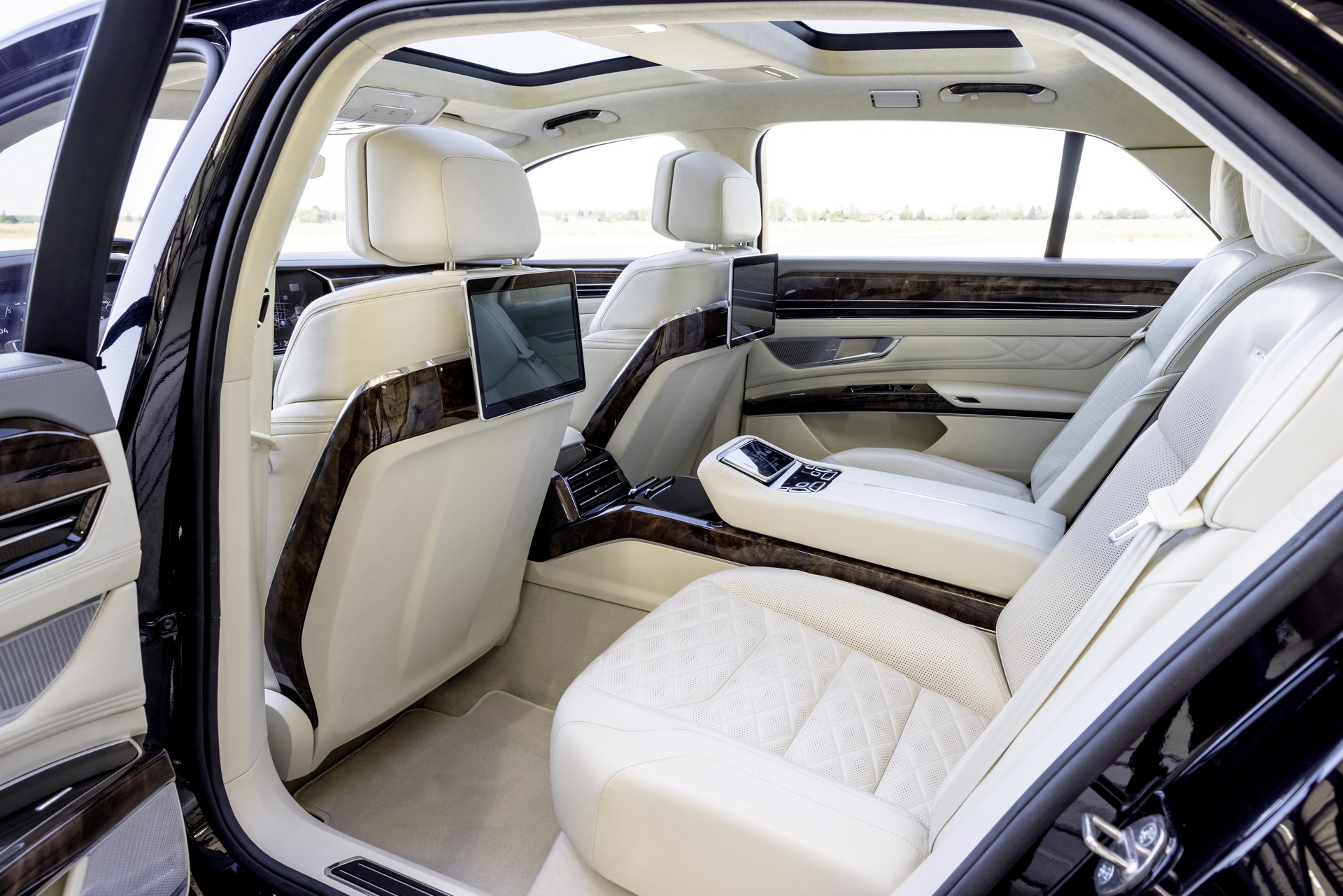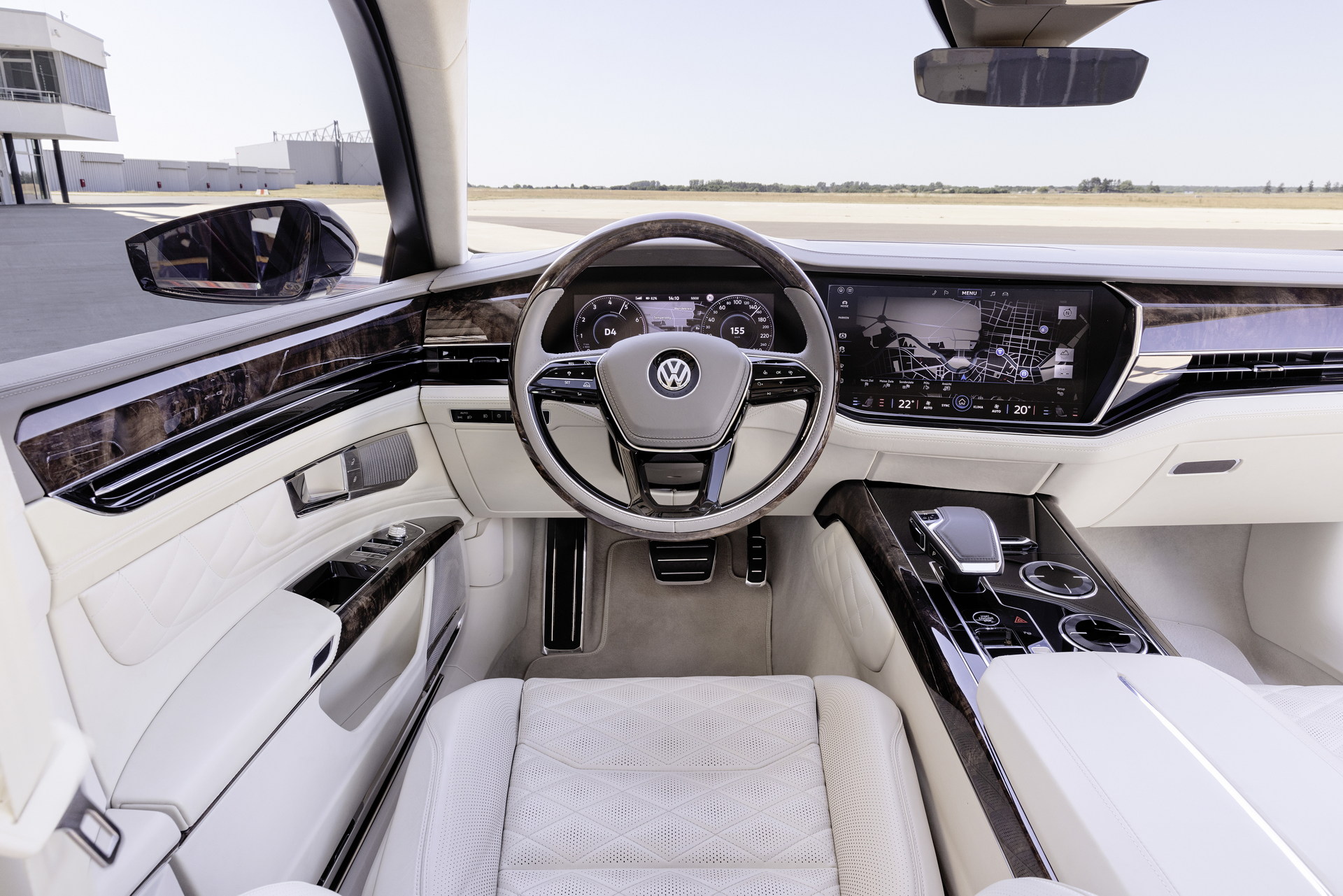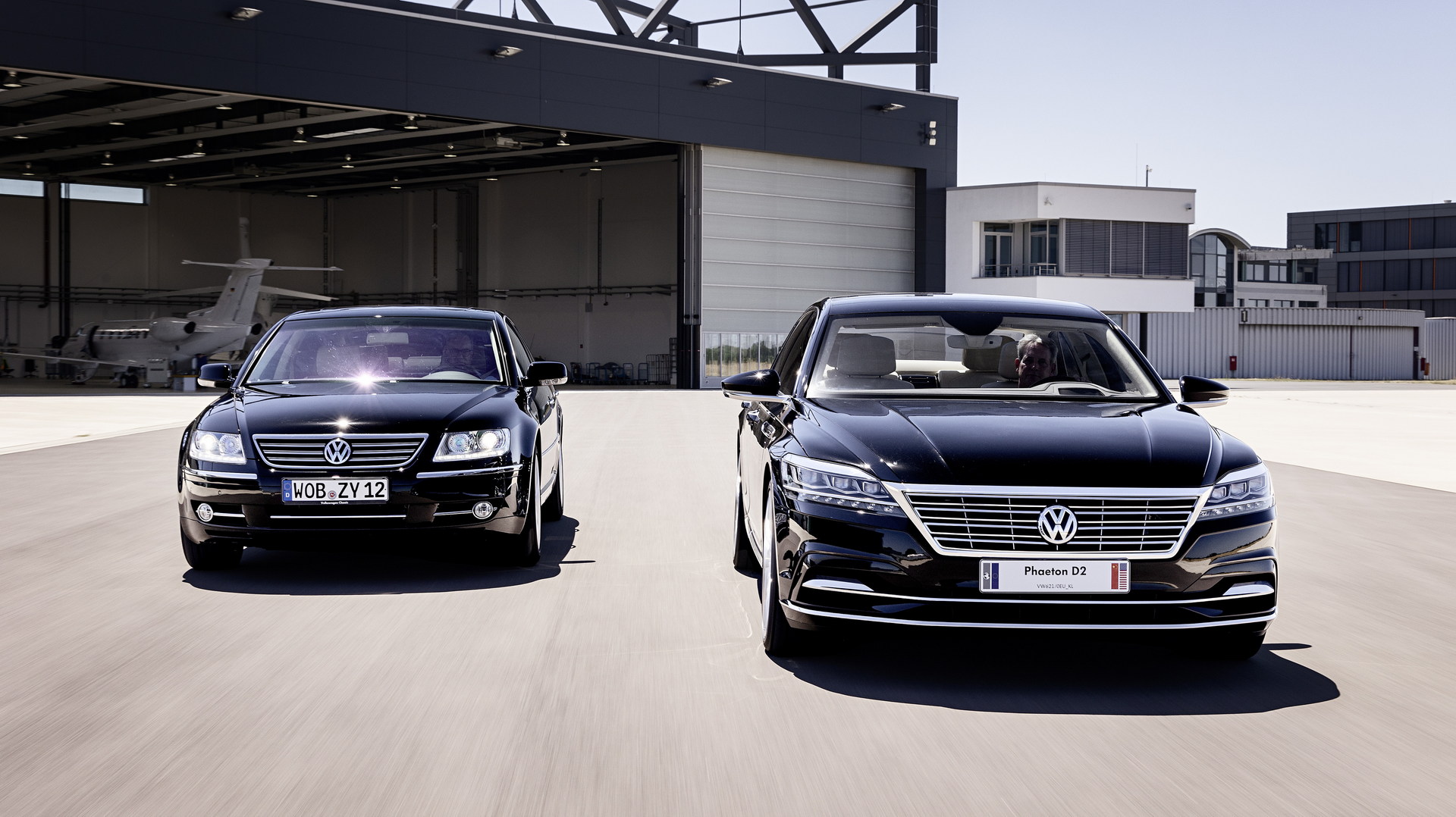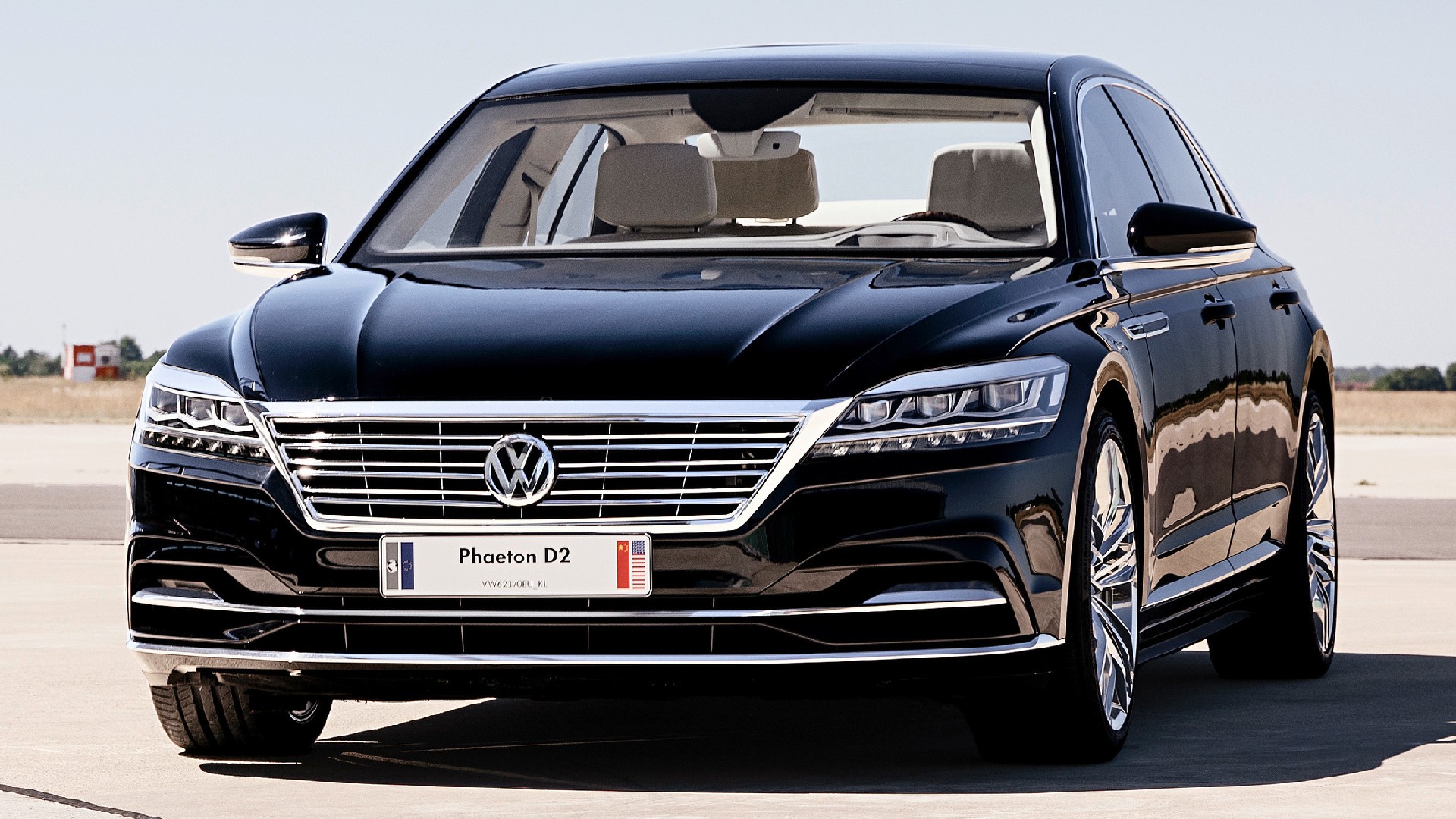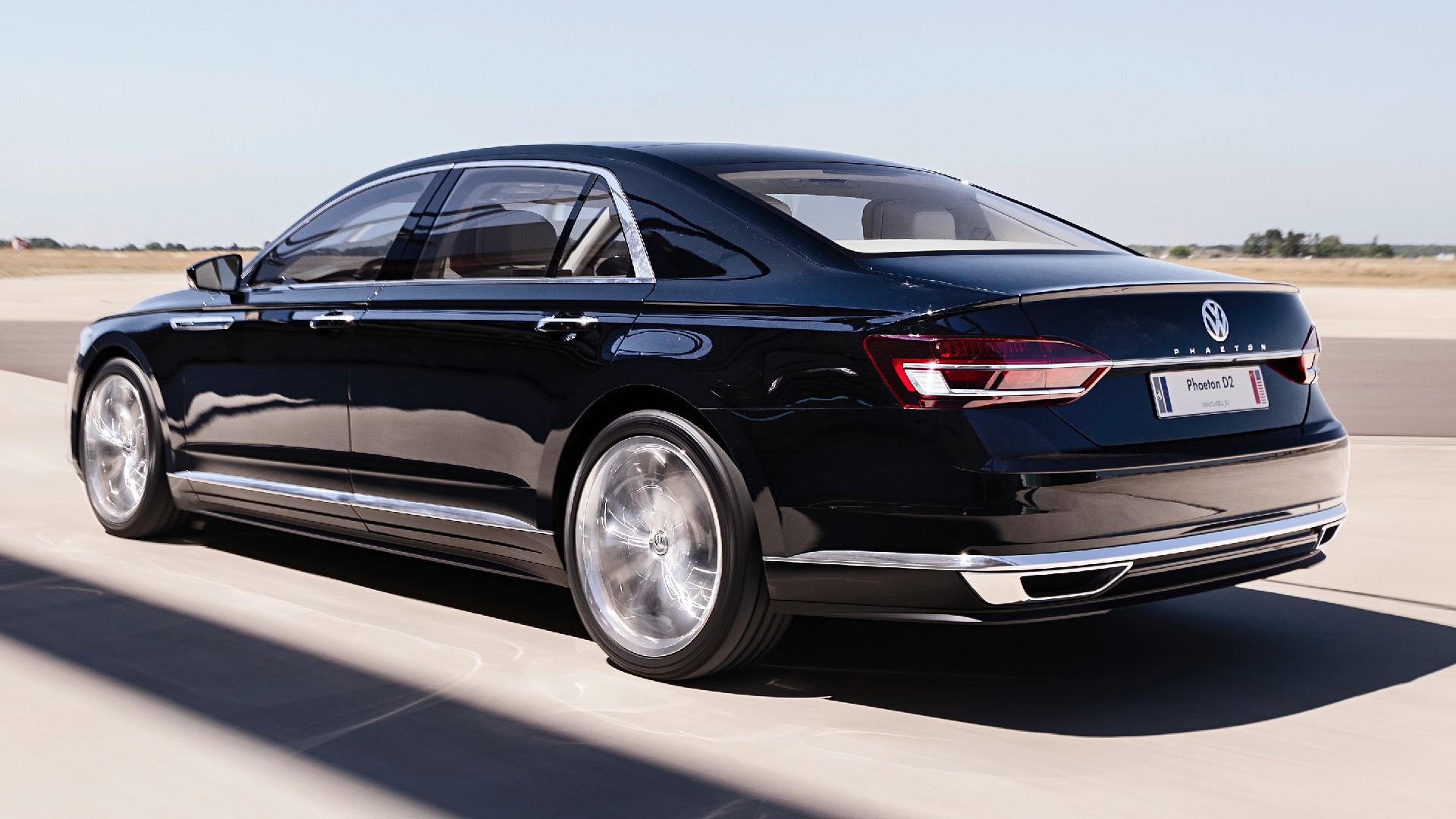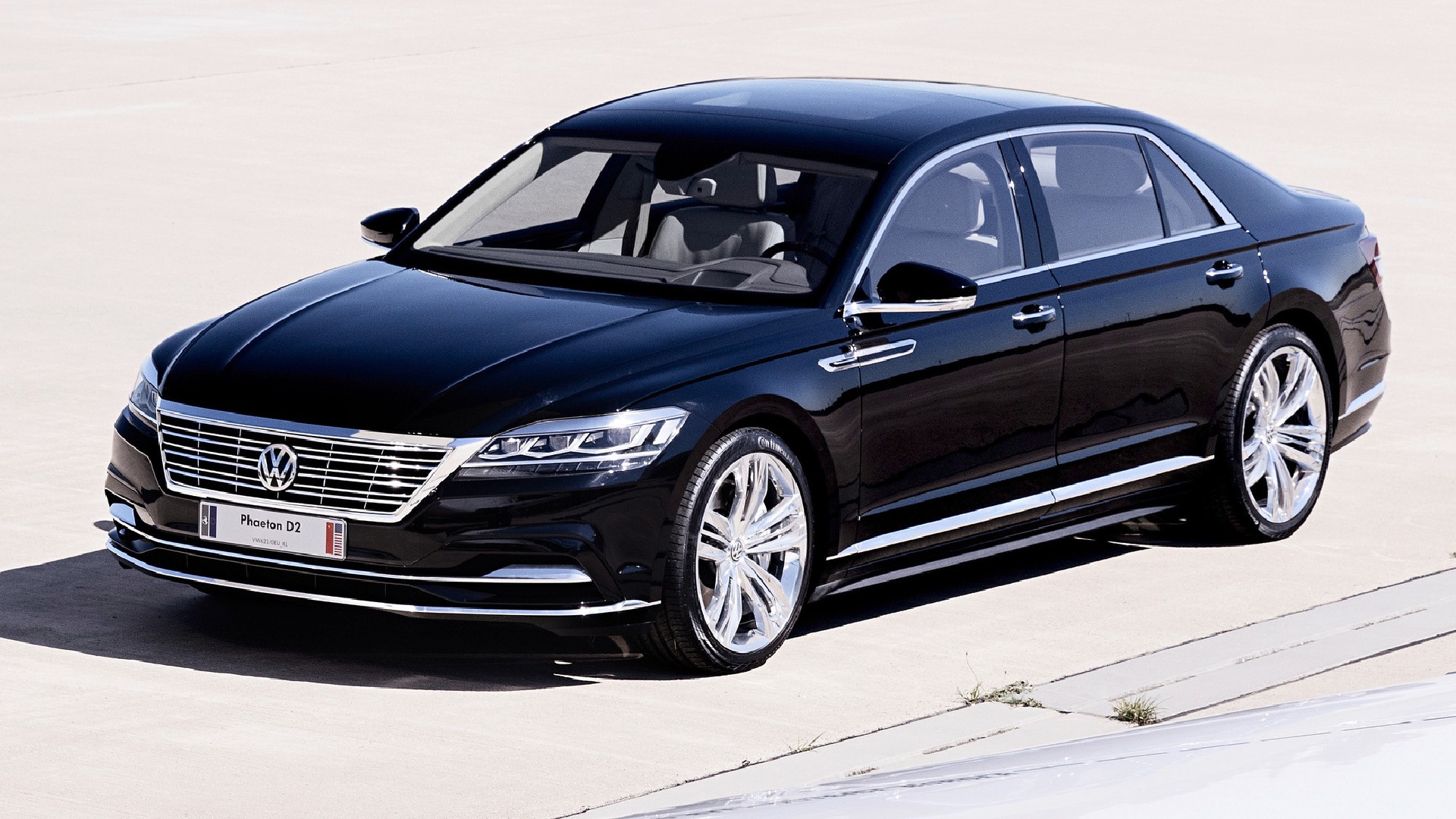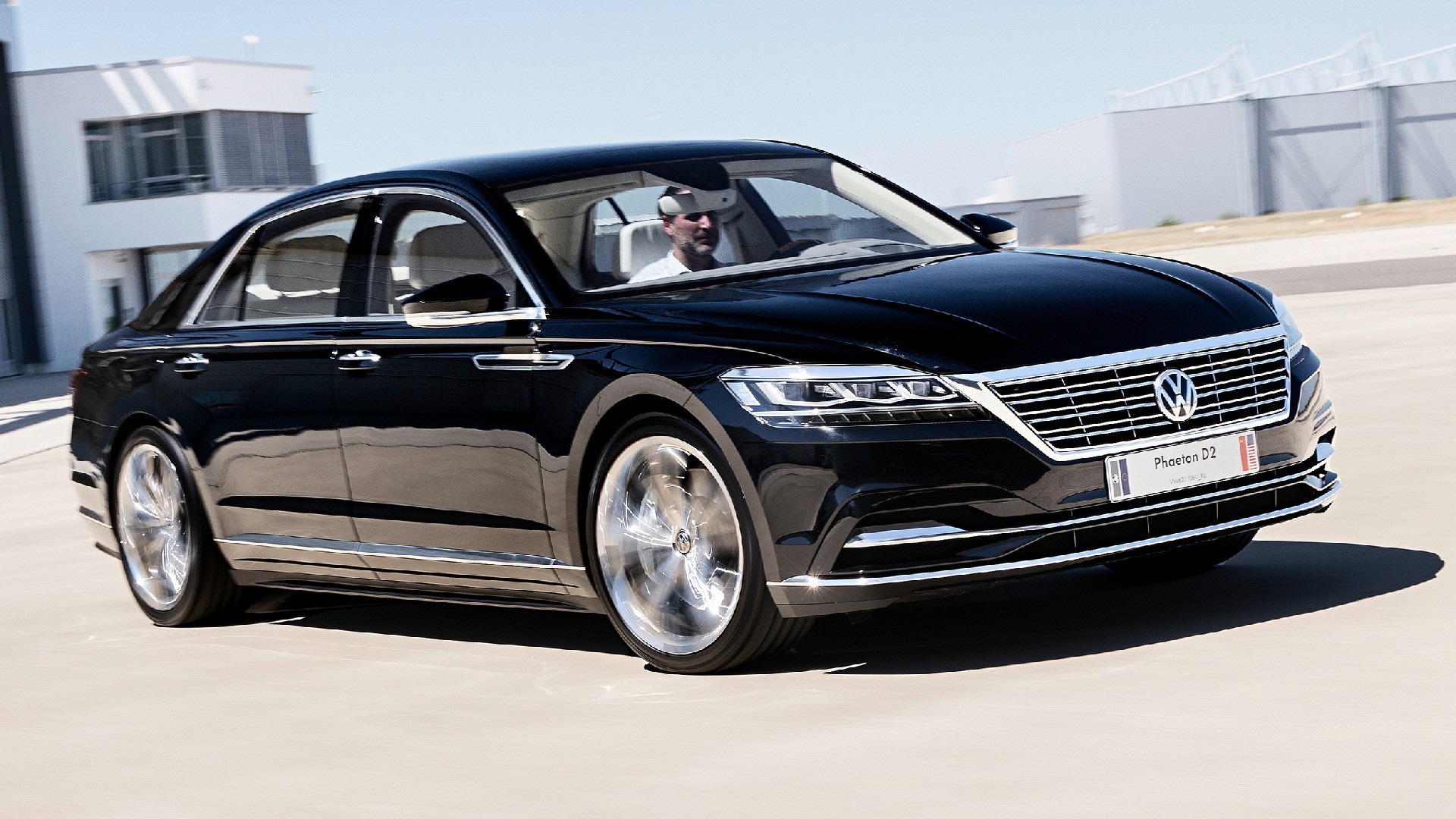In a surprise move last week, VW published photos of a never-before-seen prototype for the second-generation Phaeton as part of the nameplate’s 20th anniversary. The project was eventually scrapped in 2016 following the board’s decision to axe the flagship sedan, but new information about the powertrain options and the advanced tech features in the Phaeton D2 prove how close it came to production.
According to Germany’s Automotorundsport, Volkswagen was considering a wide engine range for the new Phaeton, including petrol, diesel, and plug-in hybrid variants. The second generation of the sedan would be based on the MLB architecture, making it easy to share engines with sibling models like the similarly-styled Audi A8.
Also Read: VW Touareg Getting Ready For Its Facelift With Updated Tech And Styling Tweaks
Diesel options would have included a 3.0-liter V6 TDI producing 282 hp (210 hp / 286 PS), and the now-discontinued 4.0-liter V8 TDI producing 402 hp (300 kW / 408 PS). Both of those engines were also fitted to the third-gen VW Touareg which inherited many features from the cancelled Phaeton project. On the petrol front, VW would have offered the Phaeton with the 3.0-liter V6 TSI producing 335 hp (250 kW / 340 PS), and a plug-in hybrid petrol producing a combined 455 hp (340 kW / 462 PS), as in the Touareg R.
More importantly, the flagship variant of the Phaeton would have been fitted with the glorious twin-turbo 6.0-liter W12 engine producing as much as 604 hp (450 kW / 612 PS). The same engine is used in the Bentley Flying Spur, allowing it to accelerate from 0-100 km/h (0-62 mph) in 3.8 seconds and giving it a top speed of 333 km/h (207 mph). Those figures would make the Phaeton a true sleeper, and a proper competitor for the V12-powered BMW M760i.
Tech Galore
On the tech front, the German publication reported that the VW Phaeton D2 was fitted with an “electrical roll stabilization system” with a camera scanning the road ahead in order to prepare the adaptive air suspension for bumps or turns. This sounds similar to Audi’s predictive active suspension, although VW could go even further by equipping its flagship with the Bentley Dynamic Ride 48V active anti-roll control system for a smooth ride and minimum body roll.
Inside, the Phaeton prototype features a fully digital cockpit with a massive 15-inch touchscreen and a 12.3-inch digital instrument cluster that eventually evolved into Touareg’s Innovision Cockpit. Other cool highlights are the tinted rear windows getting darker or demand, the ability for the plug-in hybrid variant to wirelessly charge its batteries, and plenty of sophisticated ADAS coming from VW Group’s parts bin for high-end models including the Travel Assist (semi-autonomous driving) and the Exit Assist.
We would also expect a fancy rear seat with ventilation and massaging functions, tablet-style touchscreens on the seatbacks, plus loads of rear legroom thanks to the generous wheelbase. Interestingly, the report suggests that the Phaeton would only come in long-wheelbase guise, measuring 5.3 meters (208.6 inches) long. This is similar to the Audi A8 LWB, and a lot longer than the 5,060 mm (199.2 inches) of its predecessor.
If VW hadn’t axed the Phaeton from its range, the luxury sedan would be available in markets like China and South Korea where demand for low-slung bodystyles remains strong. It would also be offered in the US market from the 2018 model year as hinted at by high-ranked officials. Finally, plans for a new Phaeton were scrapped in favour of spending more money on the electrification of the VW Group which proved to be a wise move judging from the recent forecasts. Thus, Volkswagen was left without a luxury sedan instead of China where the automaker launched the more affordable but similarly sized and MLB-based Phideon.




